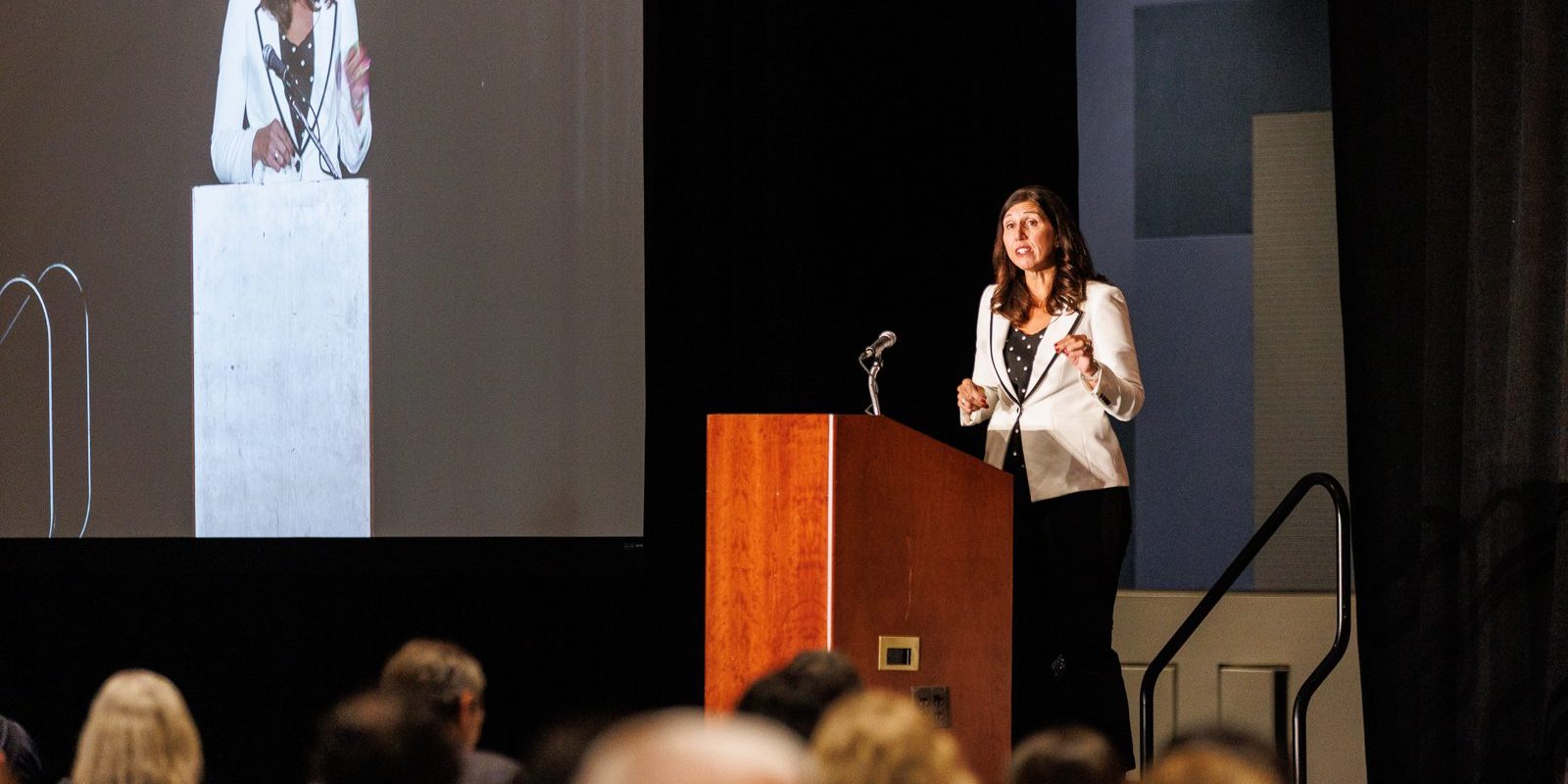StriveTogether President and CEO Jennifer Blatz opened the 2022 Cradle to Career Convening with a bold vision to place 100 million young people on a path to mobility in the United States.
The Cradle to Career Network already reaches one in seven young people ages 0-24. Its work to change lives by changing systems is gaining momentum and becoming a catalytic force in an emergent field ecosystem.
Blatz reminded the more than 500 people gathered in Chicago, Illinois, and the scores connected virtually that this national movement started small. She shared stories from the past and present while challenging everyone to keep the end game in sight.
The early days of the movement made it clear that systems – those complex interconnections of people, resources, practices and structures – needed re-engineering to deliver better results kids. Blatz described learning about continuous quality improvement from GE Aviation and being reminded by teachers and community advocates that transforming systems for kids and families was not akin to building aircraft engines. “We were working to find and correct defects in systems that were made up of and intended to serve people, and specifically kids.”
The early founders of the movement iterated on their approach, learning from Cincinnati Children’s Hospital and the Model for Improvement to create foundational components of the StriveTogether Collaborative Improvement approach. They learned as they failed and kept moving forward.
“Re-engineering systems requires us to take risks. It requires courage. We have made many mistakes along the way and have learned from those mistakes as we improve and get results,” Blatz said. “We knew something different and better was possible – and that we would have to change and harness the unknown to lean into that possibility. That is what has united us all in this movement since day one.”
Blatz likened StriveTogether network members to systems engineers because they are building the civic infrastructure that has the power to transform communities, cities and regions. Building this infrastructure – relationship by relationship, policy change by policy change – has started to transform the lives of children and families across the country.
At the onset of the pandemic, StriveTogether “systems engineers” demonstrated resiliency and commitment to solving problems to get better results for kids. There are several examples from the Cradle to Career Network:
- In Minnesota, Oklahoma and California, network members mobilized local partners to bridge the digital divide so students had equitable access to broadband and could continue learning when schools were shut down.
- In places like Salt Lake City, Utah and Dallas, Texas, network members expanded access to emergency child care.
“Times are not easy. The country has never been more divided,” Blatz said. Many network communities have lost a decade of progress on cradle-to-career-outcomes improvement, particularly in reading and math and especially for kids of color and those experiencing poverty. “And I am reminded by what I know to be true of all of you. YOU all are resilient. You are committed. You are the engineers of this movement. And everything that unites us in our quest to re-engineer systems so that every child thrives.”
She pointed to encouraging data demonstrating pre-pandemic numbers. For example, Commit Partnership in Dallas is reporting that in Richardson Independent School District, more students are meeting reading standards than before the pandemic. And Dallas Independent School District has also shown a dramatic rebound, with students returning to or surpassing pre-pandemic levels in all but one grade.
“This approach works. The civic infrastructure that we are engineering – that each of you are engineering – is already putting children on a pathway to mobility. You are obliterating antiquated ways of working in communities – ways that don’t serve kids and families well – and reconfiguring dramatically new possibilities for better and more equitable outcomes,” Blatz said.
And to achieve population level impact at scale, Blatz said the network needs to be part of something much bigger to ensure every child has every opportunity.
“In order to achieve economic mobility in communities across the country, we’ll focus on the most important levers for change: Continuing to accelerate progress across the Cradle to Career Network. Spreading the skills and competencies to build civic infrastructure through place-based partnerships. All leading to the ‘end game’ of public sector adoption or essentially re-engineered systems that center young people and allow them to thrive,” Blatz said. “In these re-engineered systems, civic infrastructure will be created to ensure that every child can fulfill their dreams. Work will be done to optimize and equalize the social determinants of health, such as education, job opportunities, access to healthcare and stable housing. Individuals and communities will have the conditions, resources, opportunities and power to achieve optimal education and quality of life. Each individual will have what they need.
Our education systems will become a learning ecosystem, blurring the lines between school and community and ensuring that young people – no matter who they are or where they’re from are supported to thrive and contribute in our interconnected world. This is what unites us – this vision for a better future for kids and families and an unyielding belief that anything is possible.”
And, as always, data will be collected, and results measured. The work only matters if people are better off as a result. This is what unites the StriveTogether Cradle to Career Network.






